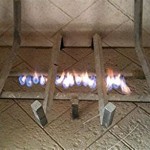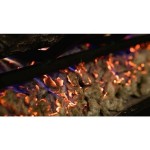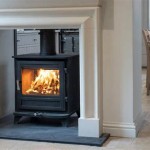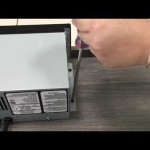How To Protect Your Fireplace From a Baby
A fireplace, a focal point of many homes, offers warmth, ambiance, and a sense of comfort. However, with the arrival of a baby, that comforting hearth can quickly become a source of potential danger. Babies are naturally curious and mobile, exploring their environment with a fascination that often leads them directly to hazards. A fireplace, with its hard surfaces, sharp edges, and potential for burns, requires careful consideration and proactive safety measures to prevent injuries. This article provides comprehensive guidance on how to protect a fireplace from a baby, ensuring a safe and secure home environment.
Assessing the Risks Posed by a Fireplace
Before implementing safety measures, it is crucial to understand the specific risks a fireplace presents to a baby. These risks can be categorized into several areas:
Burn Hazards: The most obvious danger is the risk of burns. A lit fire, even embers, can cause severe burns. Furthermore, the surface of the fireplace itself, including the brick, stone, or metal surround, can become extremely hot and pose a burn hazard even after the fire has been extinguished. Babies are particularly susceptible to burns because their skin is thinner and more delicate than that of adults.
Impact Injuries: Fireplaces often have sharp corners, edges, and hard surfaces. If a baby falls against or bumps into a fireplace, they could sustain bruises, cuts, or even more serious injuries like head trauma. The proximity to a hard, immovable object increases the potential for significant impact injuries.
Falling Hazards: Some fireplaces have raised hearths, creating a tripping hazard for unsteady toddlers. A fall onto the hard surface of the hearth could result in serious injuries. Additionally, loose bricks or stones on the fireplace could present a choking hazard if a baby were to dislodge and ingest them.
Air Quality Concerns: While not directly related to physical injury, poor air quality from fireplace use can negatively impact a baby's respiratory health. Smoke and particulate matter released during combustion can irritate the lungs and exacerbate existing respiratory conditions. Proper ventilation and responsible burning practices are essential.
Implementing Fireplace Safety Measures
Once the potential hazards are understood, the next step is to implement appropriate safety measures. These measures can be divided into physical barriers, operational safeguards, and ongoing vigilance.
Physical Barriers: The most effective way to protect a baby from the fireplace is to create a physical barrier that prevents them from getting too close. Several options are available, each with its advantages and disadvantages.
Fireplace Screens: A sturdy fireplace screen is essential for preventing sparks and embers from escaping the firebox. Choose a screen that is heavy enough to resist being pushed over and has small enough mesh to contain embers effectively. Ensure the screen fits snugly against the fireplace opening to prevent gaps. Consider a screen that attaches to the fireplace surround for added stability, especially if dealing with a very active baby.
Fireplace Gates and Fences: A fireplace gate or fence creates a complete barrier around the fireplace, preventing the baby from accessing it altogether. These gates are typically made of metal or wood and can be adjusted to fit various fireplace sizes and shapes. Look for gates that meet safety standards and have secure locking mechanisms that are difficult for a baby to open. Ensure the gate is securely anchored to the wall or floor to prevent it from being pushed over.
Hearth Cushions and Edge Guards: If a full gate is not feasible or desired, consider using hearth cushions and edge guards to soften the hard surfaces and sharp edges of the fireplace. These products are typically made of foam or rubber and are designed to be attached to the hearth and edges of the fireplace surround. While they will not prevent a baby from reaching the fireplace, they can help to reduce the severity of injuries in case of a fall or bump. Choose cushions and guards that are non-toxic and easy to clean.
Operational Safeguards: In addition to physical barriers, certain operational safeguards are necessary to minimize the risks associated with fireplace use.
Never Leave a Fire Unattended: This rule is paramount. Never leave a fire burning unattended, even for a short period. A baby could quickly crawl or toddle to the fireplace and get into trouble. If it is necessary to leave the room, extinguish the fire completely or ensure that a responsible adult is present to supervise.
Teach Children About Fire Safety: As children grow older, it is essential to teach them about the dangers of fire and the importance of staying away from the fireplace. Explain to them the potential for burns and the need to respect the fireplace as a source of heat and danger. Reinforce these lessons consistently.
Store Firewood Safely: Firewood should be stored away from the fireplace and out of reach of children. A stack of firewood can be tempting for a baby to climb on, which could lead to a fall. Additionally, firewood can harbor insects or splinters that could pose a hazard. Store firewood in a dry, well-ventilated area away from the house, if possible.
Install and Maintain Smoke Detectors: Working smoke detectors are essential for fire safety in any home, but especially one with a fireplace. Ensure that smoke detectors are installed on every level of the house, including near bedrooms. Test the smoke detectors regularly to ensure they are functioning properly and replace the batteries as needed.
Maintaining Vigilance and Adapting to Development
Protecting a fireplace from a baby is not a one-time task but an ongoing process that requires vigilance and adaptation as the baby develops. Babies' abilities and curiosity change rapidly, so it is important to reassess safety measures regularly and adjust them as needed.
Regularly Inspect Safety Measures: Periodically inspect fireplace screens, gates, and other safety devices to ensure they are in good working order and securely attached. Check for loose screws, broken hinges, or any other signs of wear and tear. Repair or replace any damaged components promptly. This ensures the continued effectiveness of the safety measures.
Adapt to Changing Abilities: As the baby grows and becomes more mobile, they may develop new skills, such as climbing or figuring out how to open latches. Be prepared to adapt safety measures to address these new abilities. For example, a gate that was previously effective may need to be raised or reinforced as the baby learns to climb. Similarly, latches may need to be replaced with more secure ones that are difficult for the baby to open.
Address Potential Hazards Promptly: Be proactive in identifying and addressing potential hazards before they become a problem. For example, if the baby starts showing an interest in touching the fireplace tools, move them out of reach. If the baby is able to push over a lightweight screen, replace it with a heavier, more stable one. Addressing these issues promptly can prevent accidents and injuries.
Supervision is Key: Even with the most robust safety measures in place, supervision is still essential. Never rely solely on physical barriers to protect a baby from the fireplace. Actively supervise the baby and ensure they are not getting too close to the fireplace or engaging in any dangerous behavior. This is the most important aspect of fireplace safety.
By carefully assessing the risks, implementing comprehensive safety measures, and maintaining vigilance, parents and caregivers can create a safe environment where babies can explore and develop without being exposed to the dangers of a fireplace. This proactive approach ensures that the fireplace remains a source of warmth and comfort rather than a source of worry and potential harm.

How To Baby Proof A Fireplace Diy Hearth Cushion Simply September

How To Childproof Your Fireplace Baby Proof Sa South

3 Ways To Baby Proof A Fireplace Wikihow

Babysafetyfoam Com Baby Proofing Fireplace Hearth Guard Bumper Pad Safety Cushion Cover Protection

Diy Baby Proofing Your Brick Fireplace Thisaveragemom

How To Baby Proof A Fireplace Diy Hearth Cushion Simply September

Lightning Fast Delivery Babyproof Your Hearth And Fireplace With These Simple Tips Tricks Bumpers For Babies

3 Ways To Baby Proof A Fireplace Wikihow

How To Childproof Your Fireplace Baby Proof Sa South

How To Baby Proof Fireplace With A Safety Screen Proofing








